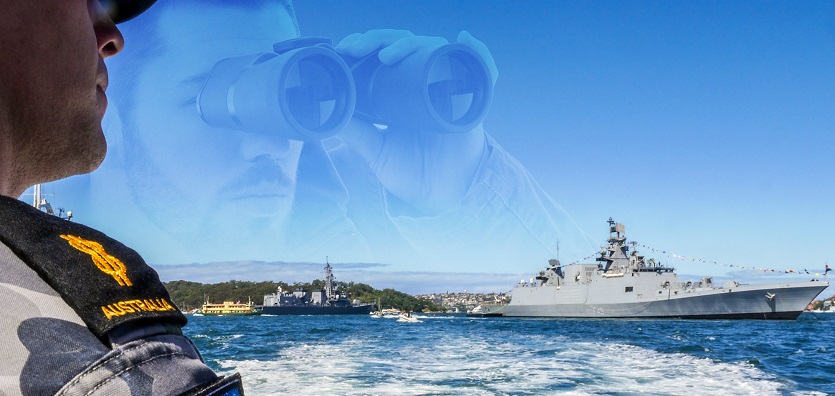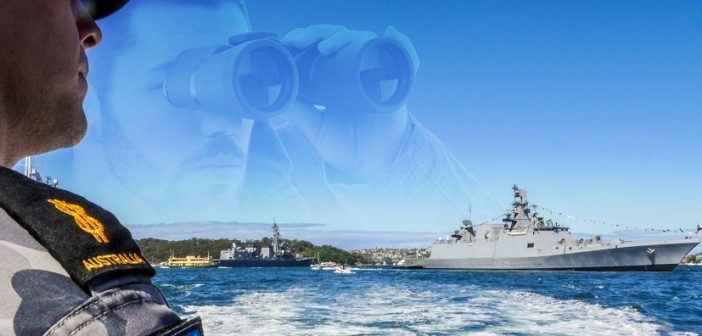
By Dr John Coyne
Australia’s Department of Home Affairs recently started a once-in-50-years shake-up of its civil maritime surveillance capabilities: currently valued at over $AUD 100 million a year. The ‘future maritime surveillance capability’ project is to ‘provide the next generation maritime surveillance capability to counter current and emerging civil maritime threats to Australia … [and]provide surveillance capabilities that enable timely and effective deterrence, prevention and response operations to protect Australia’s borders and exercise sovereign rights’.
Australia’s maritime jurisdiction covers about 14 million square kilometres, including an exclusive economic zone (EEZ) of over 10 million square kilometres. At the best of times maintaining an awareness of this maritime territory is no easy task. Protecting the sovereignty of our maritime borders has never been more difficult than it is today.
Australia’s current maritime surveillance arrangements are a product of slow evolution over five decades. Australia’s maritime surveillance began in the late 1960s, using Royal Australian Air Force and Royal Australian Navy aircraft to patrol its newly declared 12-nautical-mile territorial sea.
In August 1977, the Australian government announced its intention to declare a 200-nautical-mile exclusive economic zone around the continent. With a growing need for aerial surveillance, the combined military and civil surveillance commitment was boosted to 27,000 flight hours per year. A substantial part of the increase came from the use of chartered civilian aircraft.
By the late 1990s, the contracted civil maritime surveillance effort had progressed from a group of binocular-armed observers to encompass a cohesive fleet of contractor-supplied and -operated, purpose-modified aircraft, using modern search radar and communications systems and mature procedures originally adapted from the military maritime surveillance world.
Since then, civil contractors have provided around 95% of our civil maritime surveillance.
Over the past four years, Australia’s border security framework has been subject to ongoing landmark overhauls. On 1 July 2015, the Department of Immigration and Border Protection and the Australian Customs and Border Protection Service were officially amalgamated into a single agency. At the same time, the Australian Border Force (ABF) was stood up within the new department.
On 20 December 2017, with the ABF reforms still in progress, the Home Affairs portfolio and the Department of Home Affairs were established. Along with further professionalisation of the ABF, Home Affairs continued to innovate and introduce new technologies focused on maintaining the integrity of Australia’s borders.
Since 2016, the ABF, through its Maritime Border Command, has created a ‘ring of steel’ around Australia’s northern waters. Primarily focused on blocking people smugglers, the command’s officers, supported by military and civil maritime-surveillance capabilities, have made a substantial contribution to thwarting other maritime crimes like illegal, unregulated and unreported fishing.
As Australia develops the future maritime surveillance capability it needs to consider the concepts of depth, integration, cooperation, and technology and the surveillance spectrum.
In mid-August last year, a fishing trawler carrying 17 Vietnamese asylum seekers successfully penetrated Australia’s ‘ring of steel’ maritime border arrangements undetected. As the vessel continued its course down Australia’s treacherous northern coastal waters mother nature struck. On the 26th of August the vessel ran aground near the mouth of the Daintree River, stranding the asylum seekers and crew in Northern Australia’s remote and crocodile infested waters. In a stroke of luck, for both Home Affairs and the asylum seekers, two local fishermen found the stranded group. All the asylum seekers were quickly returned to Vietnam.
In early September two foreign nationals, French and English citizens, accidently hit a reef and ran aground in the Abrolhos islands off the Western Australian coast. The stricken yacht was later found by fisherman and air and sea search was launched. After the men were located over a thousand kilograms of cocaine and ecstasy–with a street value of $1 billion—was discover.
Both incidents highlight the importance of ‘depth’ in our border management strategies. They also clearly illustrate the importance of the Australian public to border security and their willingness to do their bit.
As our national maritime domain awareness (MDA) and response capabilities have improved, the onshore and nearshore eyes, ears and muscle in Australia’s north have been wasting away.
Both the Australian Federal Police (AFP) and the ABF have modest offices in Cairns and Darwin. While their officers are highly trained, there aren’t many and yet they are responsible for some of the world’s largest law enforcement operating areas.
Northern Australia’s vastness creates three problems for ABF and AFP decision-makers. First, they need eyes and ears in communities spread across Western Australian, the Northern Territory and Queensland. These eyes and ears need to include citizens who are ready and willing to report unusual behaviour. And they need a mechanism for reporting their observations.
Second, both organisations need an enhanced capability in northern Australia to undertake covert surveillance of suspicious activity on and near the coast.
Over the last decade alone, there have been dramatic developments in maritime surveillance technologies and their affordability. From small cube satellites and unmanned aerial vehicles to artificial intelligence and swarm technology, the options for Australia are almost limitless. Integrating these new capabilities with Home Affairs’ legacy systems to develop a single maritime domain interface will be complex endeavour. Further integration of that interface with Defence’s capabilities to create a single civil/military MDA window seems a long way off.
Since federation the prevailing national security thinking has been underpinned by a concept of defending Australis from the region. Given the transnational nature of organised crime and terrorism we need to revisit this concept. In today’s threat environment Australia is defending with the region.
Understandably then, as ASEAN continues its slow journey towards economic and security integration policy makers will need to consider how Australia will cooperate with the region in terms of MDA and civil maritime security.
In considering our future surveillance technologies, Australia ought to be mindful that a comprehensive maritime border security strategy depends as much on a multi-stage process as on technology. The surveillance process starts with detecting potential threats and finishes with disruption operations. Just as importantly, every surveillance capability has strengths and weaknesses that vary depending on the specific surveillance stage.
Searching involves surveying an area using active or passive technical or non-technical means. The aim is to identify anomalous behaviour in Australian waters. Effective searching involves using a mix of sensor types across the search area and integrating the different data feeds to produce a comprehensive picture of the situation so that other surveillance or response assets can be cued effectively.
Detection is the moment when an object or vessel is discovered. It’s achieved through one or more technical (active radar or satellite) sensors, visual detection or self-reporting.
The level of security risk assigned to a detected vessel depends on several factors.
Obtaining information about a vessel, such as its country of origin and any previous offences, assists border protection authorities to make further judgements and determine the level of urgency of the case.
The capability to track a vessel has several applications. Accurate tracking enables authorities to determine the vessel’s direction and possible destination, which may further elucidate the threat posed. If necessary, it also informs the planning of an interception at sea or on land.
Each step of the process contributes to assessing whether a vessel needs to be intercepted, disrupted, or both, by a navy vessel or an ABF patrol boat. If the vessel is involved in an illegal activity, the interception or interdiction itself may disrupt that activity. This process requires a manned patrol boat so that authorised personnel can board and inspect a vessel.
Ultimately, the aim of all this activity is to increase decision-makers’ understanding of maritime risks and threats by layering information and intelligence collected from space, air, surface and subsurface assets to provide a rich picture of activity at sea that can be further analysed to identify threats.
Home Affairs will need to be careful that the allure of technology doesn’t get in the way of getting the capability mix for the surveillance spectrum right.
The development of Australia’s future maritime surveillance capability is going to be a complex intellectual and financial challenge for the Australian government. In a time of increased strategic uncertainty and broadening of non-traditional national security threats there is little tolerance for failure nor time to delay.






